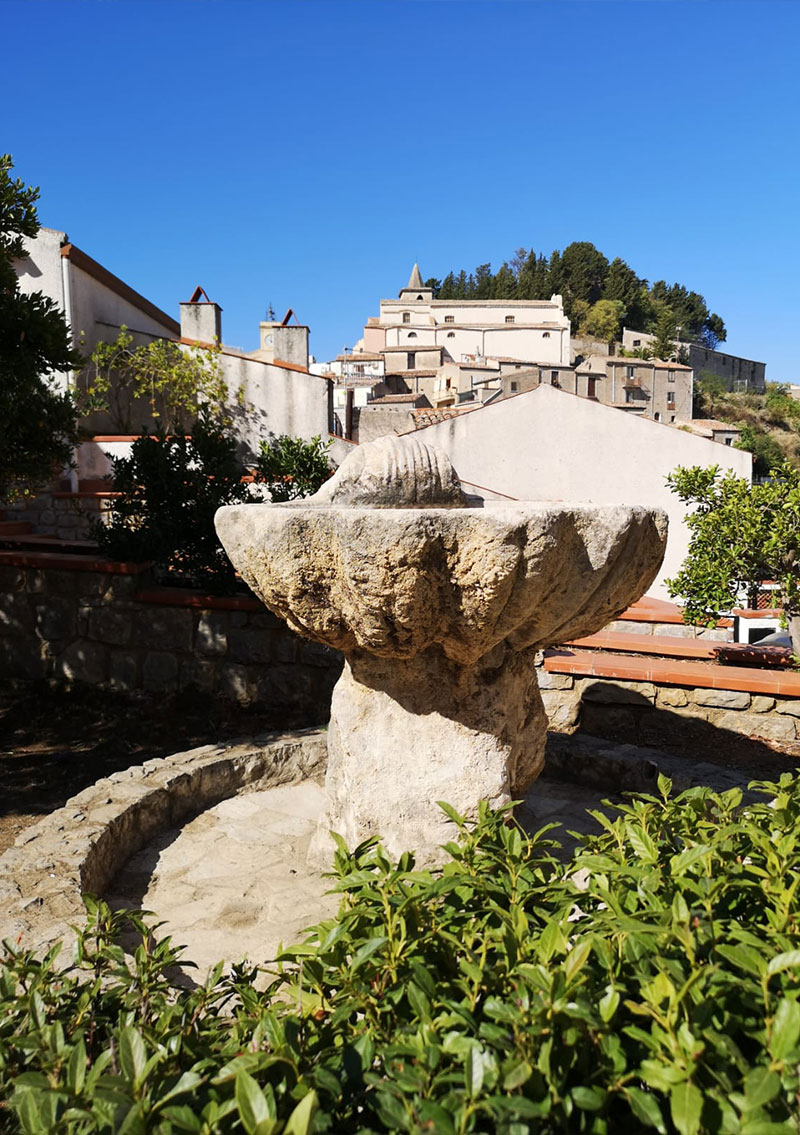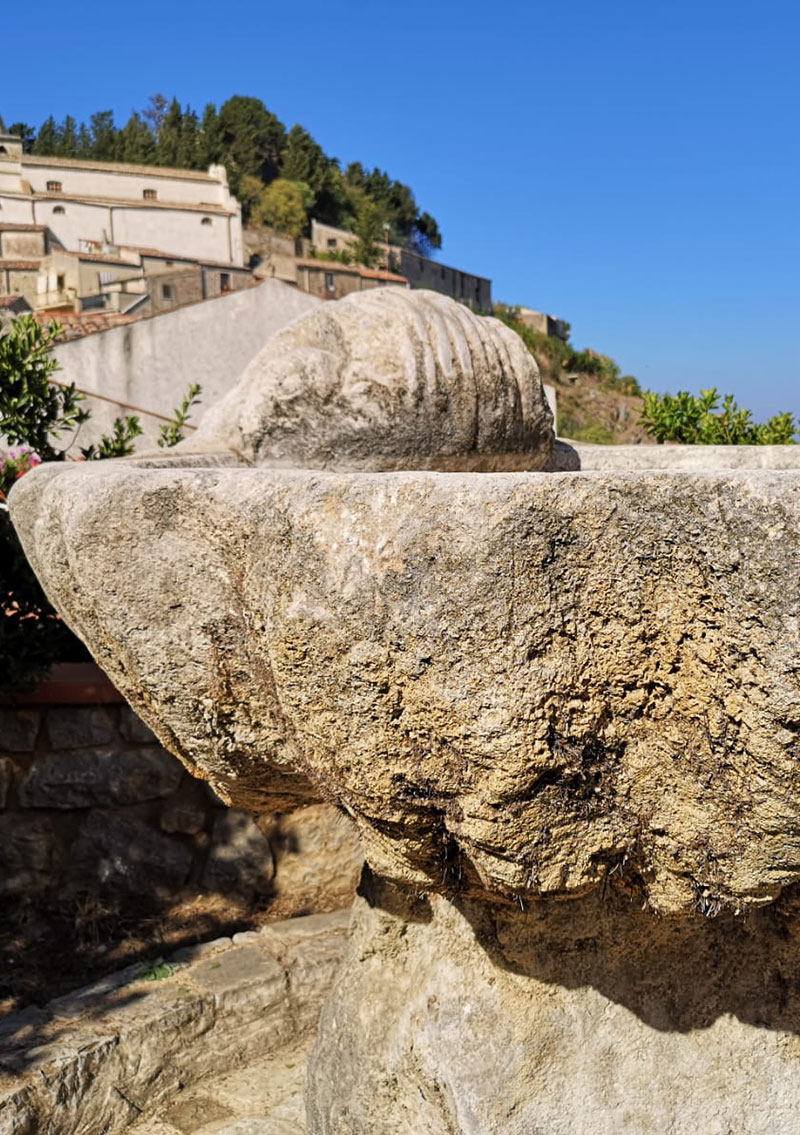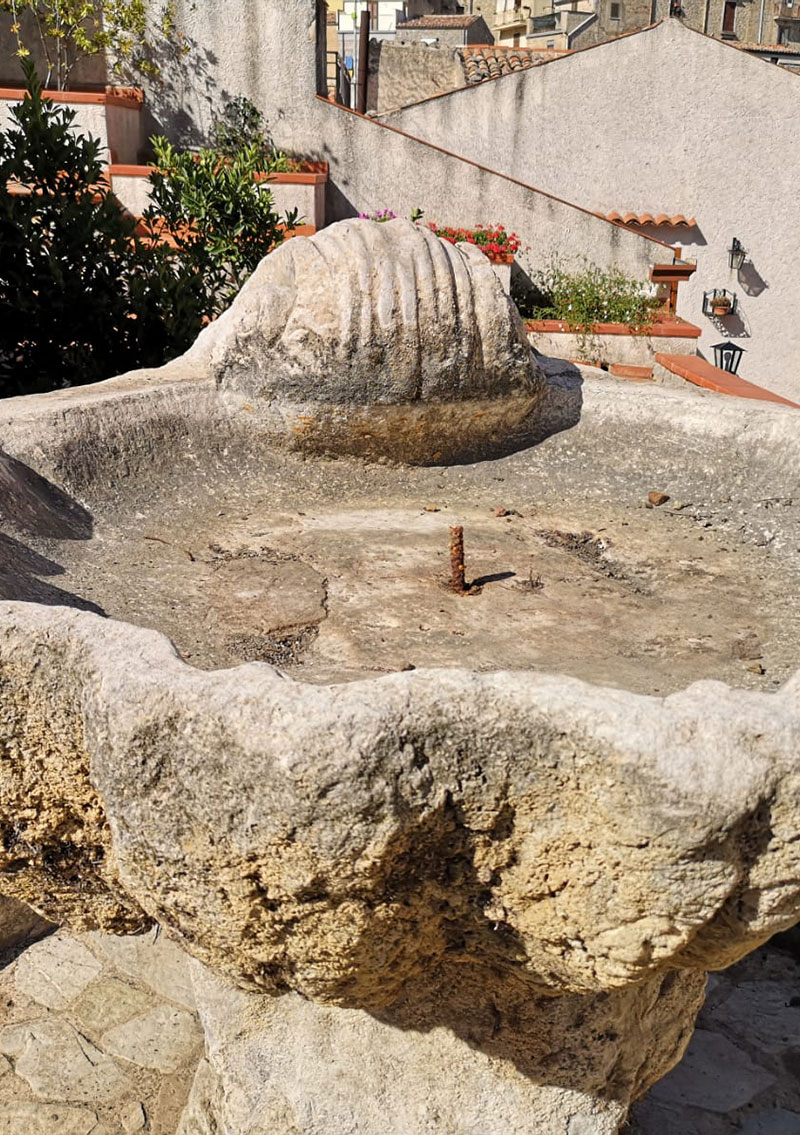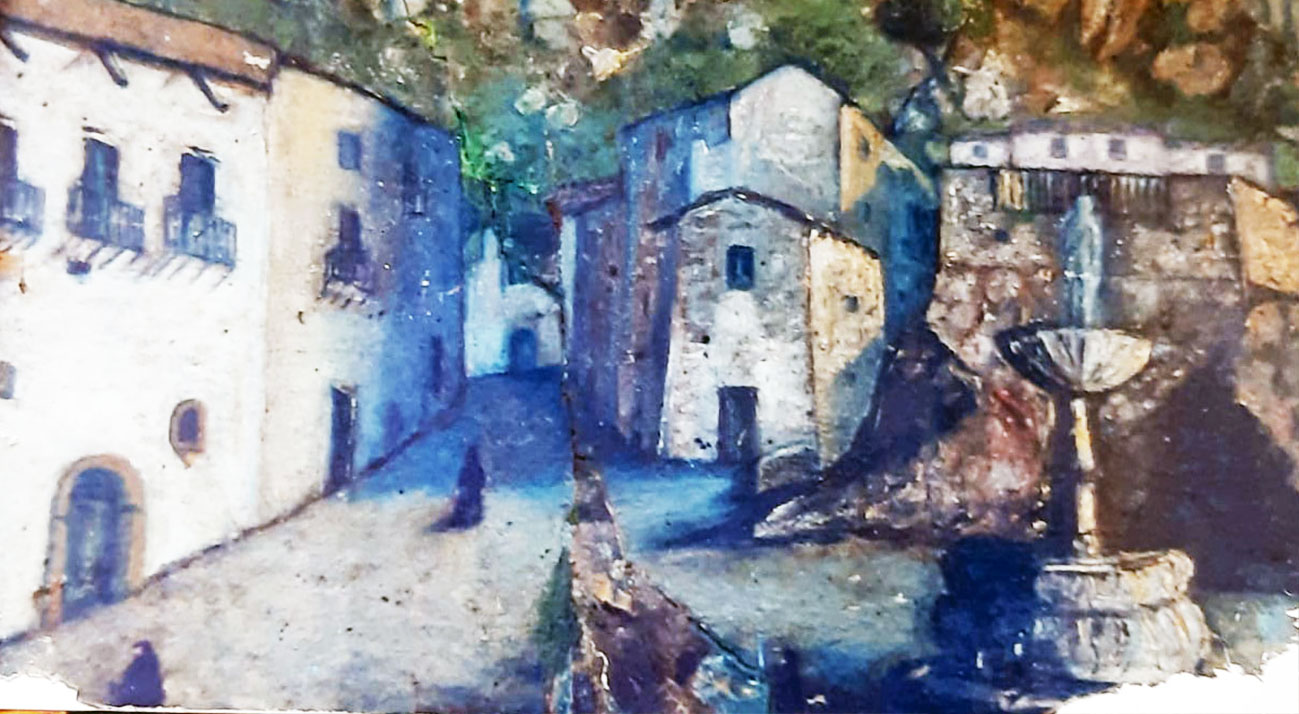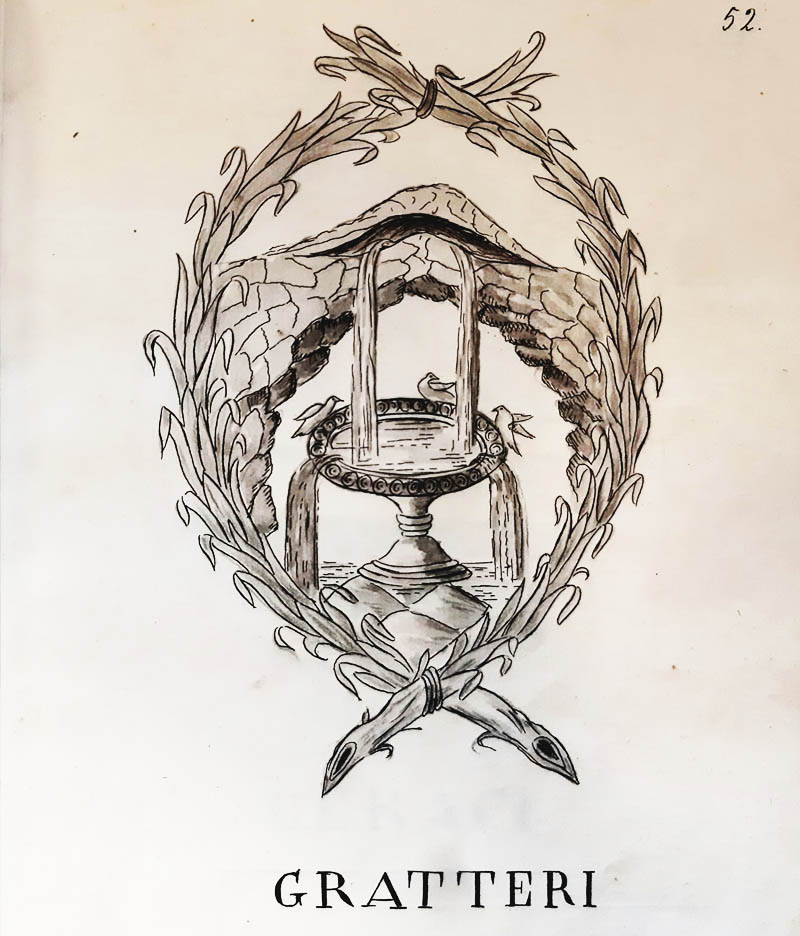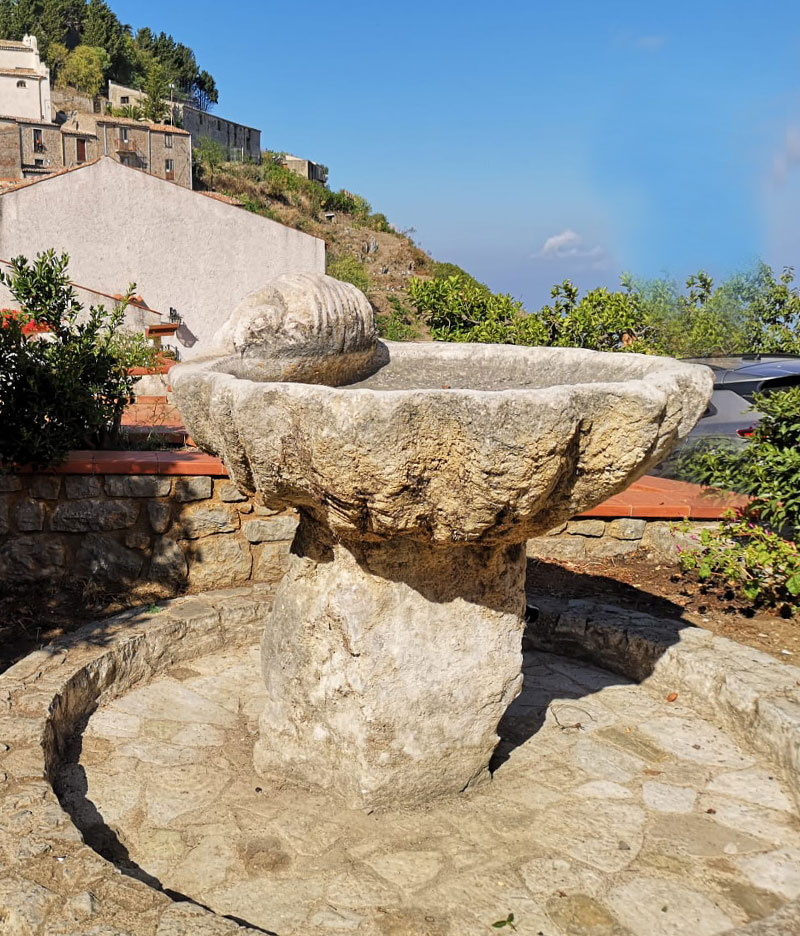Your basket is currently empty!
The first stop to start your mysterious tour in the enchanting village within the Madonie, could be in the Main Square where a stone shell that would probably contain the very history of the ancient village “of the craters” is located, in a small villa in front of the Mother Church.
According to ancient descriptions, in fact, Gratteri takes its name from some craters present on its territory, formed by the perennial dripping of calcareous rocks that would form springs of purgative and restorative water: “oppidum a Cratere ob perennem stillantem aquam celebri dictum” (R.Pirri, Sicilia sacra…, Vol.II, p. 829, Palermo 1644).
This shell should certainly be linked to that one of the Grotta Grattara, from which the village would probably take its name. As the legend claims, in fact, in this fairy cave, lived and still lives today, a thousand-year-old woman, guardian of the cave, the Old Woman, who, according to the Author, must be linked to a primordial priestess who dispensed oracles through the spring of the Nymph, an indigenous Naiad , guardian of the mountain waters.
In the past, in fact, all the traditional and sapiential cultures were animated by a sacral interpretation of the territory. The Greeks and the Romans for example, bound each place to a particular god: the “Genius Loci“. Thus, every spring, every valley, every mountain had its own protective god, the spirit of that place, very often represented by Nymphs that lived in fountains, streams or the sea.



